HUMAN EYE
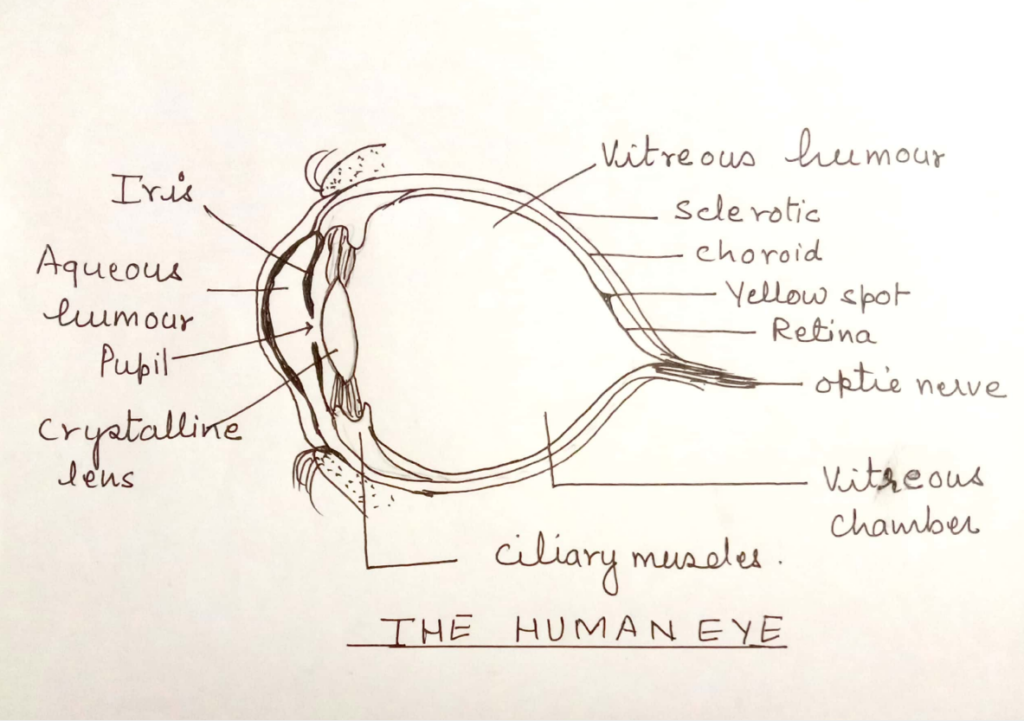
INTRODUCTION
- The front part of the eye is covered by a transparent spherical membrane called cornea.
- Light enters the eye through cornea and the space behind the cornea is filled with a liquid called aqueous humour.
- Just behind the cornea there is a dark coloured muscular diaphragm called iris which has a small circular opening in the middle called pupil.
- The pupil appears black because no light is reflected from it. The iris regulates the amount of light entering the eye. It regulates the light by adjusting the size of the pupil.
POWER OF ACCOMMODATION
- The eye is a convex lens made of a transparent jelly like proteinaceous material.
- The eye lens is hard at the middle and gradually becomes soft towards the outer edges.
- The eye lens is held in position by ciliary muscles the ciliary muscles help in changing the curvature and focal length of the eye lens.
- The inner back surface of the eye ball is called retina it is a semi-transparent membrance which is light sensitive and is equal or same as the screen of camera.
- The light sensitive receptors of the retina are called rods and cones when light falls on thee receptors they send electrical signal to the brain through the optic nerve
- And the space between the retina and eye lens is filled with another fluid called vitreous humour. The light coming out from an object enters the eye through cornea and pupil.
- The eye lens converges these light rays to form a real ,inverted and diminished image on the retina.
- The light sensitive cell of the retina gets activated with the incidence of light and generate electrical signals.
- The process by which the ciliary muscles changes the focal length of an eye lens to focus distant or an near objects clearly on the retina is called the accommodation of the eye.
- The distance between the near point and the far point is called range of vision
- Colour vision is possible only through cones of the retina which are stimulated only in bright light .
- One cannot make out the red , violet Or purple flowers in a garden on moon light because then only road function and not cones.
DEFECTS OF EYES
Colour blindness (colour vision deficiency ) is a condition in which certain colours cannot be distinguished and is mostly commonly due to an inherited condition Cones (colour sensitive reception ) containing single visual pigments selection for red ,green and blue light are present in the normal human eye.
MYOPIA (Near Sightedness)
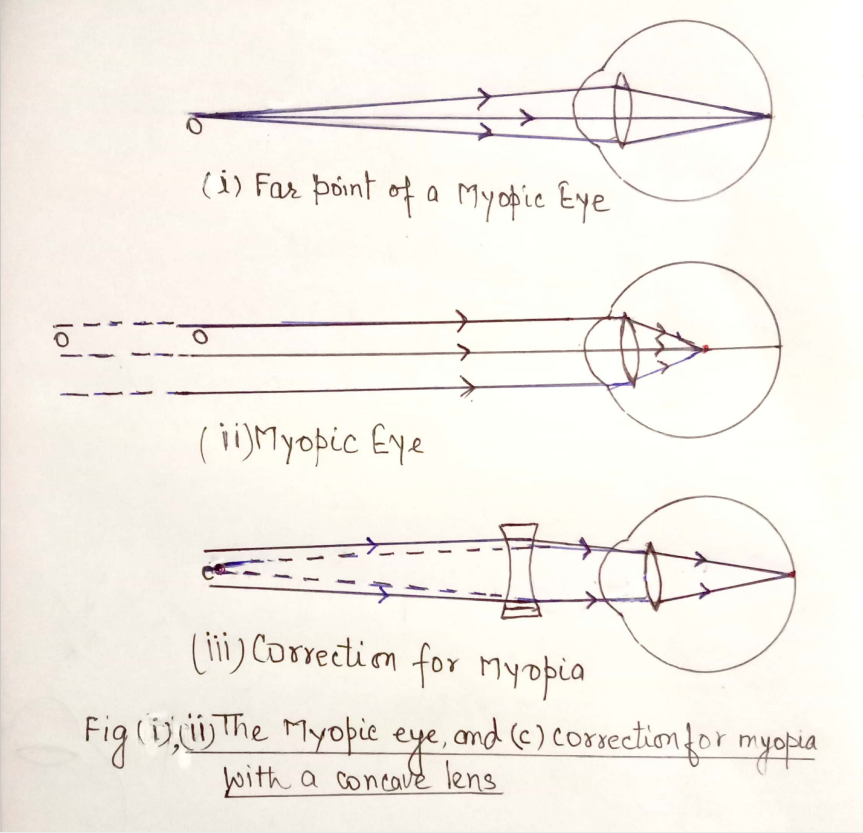
The Myopic eye and correction for myopia with a concave lens
- Also called near-sightedness.
- A person can see nearby objects clearly but cannot see distant object distinctly.
- A person with this defect has the far point nearer than infinity.
- This defect may arise due to
- Exercise curvature of the eye lens
- Elongation of the eye ball.
- This defect can be corrected by using a concave lens of suitable power
- A concave lens of suitable power will bring the image back on the retina and thus defect is corrected.
HYPERMETROPIA
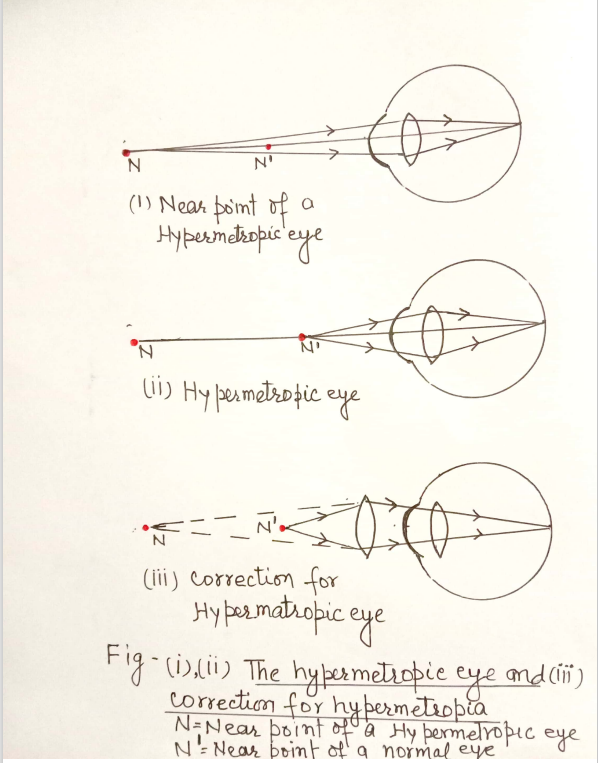
HYPERMETROPIA
- Also called far-sightedness a person can see distant object clearly but cannot see near by object distinctly.
- The near point for the person is farther away from the normal near point such a person has to keep a reading material much beyond 2.5 cm from the eye.
- Because the light rays a close by object are focused at a point behind retina.
- This defect arises either because:
- The focal length of the eye lens is too long
- The eyeball has become too small
- This defect can be corrected by using a convex lens of appropriate power.
PRESBYOPIA
- When the near point gradually recedes away and the person find difficulty recedes away and the person find difficulty to see nearby object comfortable and distinctly without corrective eye glasses .this defect is called presbyopia
- It arises due to the gradual weakening of the ciliary muscles and diminishing flexibility of the eye lens
- Sometime a person may suffer from both myopia and Hypermetropia such people often require bi focal lenses.
REFRACTION OF LIGHT THROUGH A PRISM
- When a ray of light is incident on a rectangular glass slab after refracting through the slab it gets displaced laterally
- As a result the emergent ray comes out parallel to the incident ray unlike a rectangular slab the side of a glass prism are inclined at an angle called the angle of prism
DISPERSION OF WHITE LIGHT BY A GLASS PRISM
- The phenomenon of splitting of white light into its 7 constituent colours when it passes through a glass prism is called dispersion of white light.
- The various colour seen are violet ,indigo, blue ,green, yellow, orange, and red. The sequence of colour remembers as VIBGYOR.
- The band of seven colour is called the spectrum . the different component colour of light bends at a different angle with respect to the incident angle.
- The red light bend the least while the violet light bends the most.
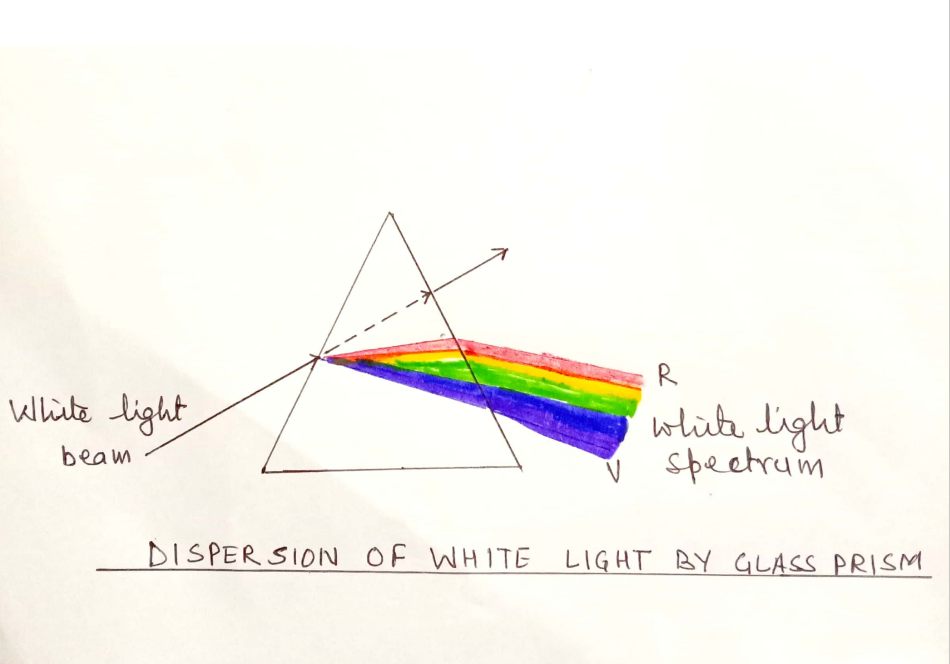
ATMOSPHERIC REFLECTION
The reflection of light caused by the earth atmosphere having air layer of different optical densities is called atmospheric refraction.
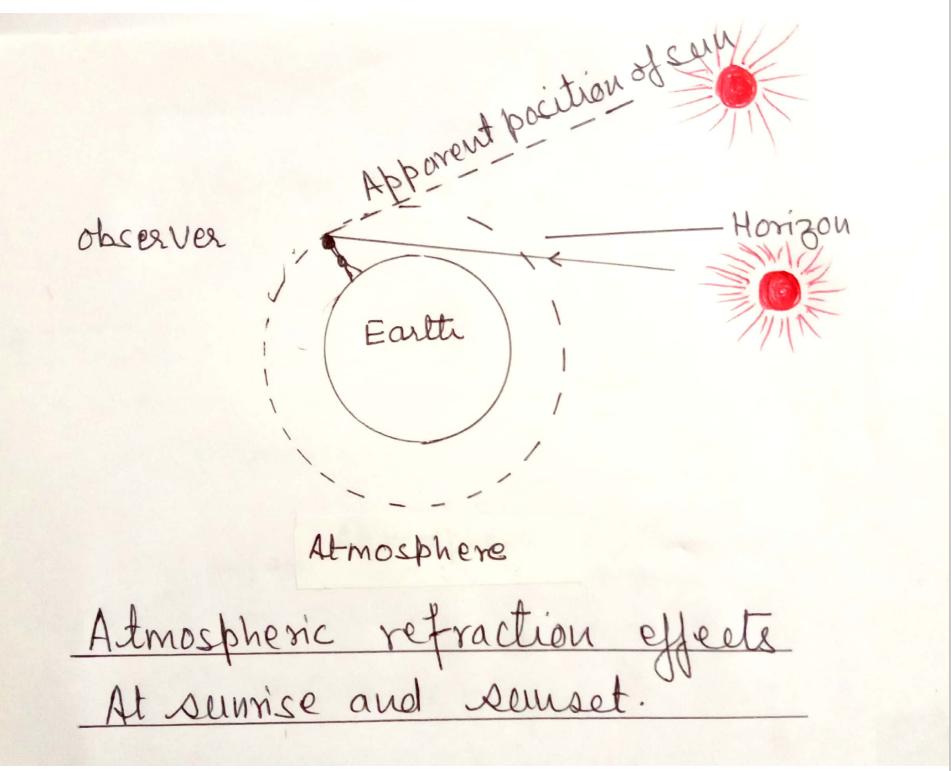
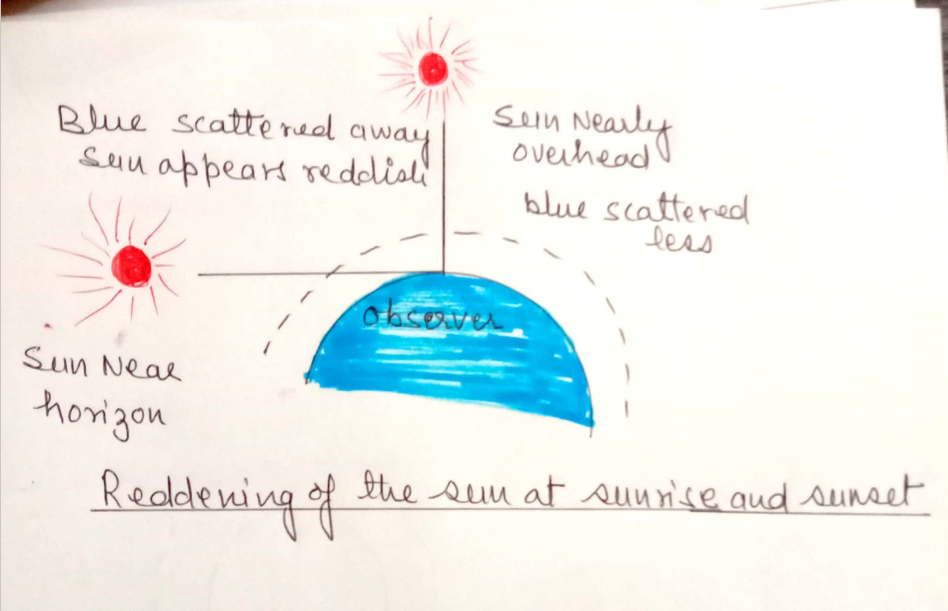
TWINKLING OF STARS
- It is due to atmospheric refraction of starlight
- Distant star act like a point source of light as the bean of starlight keeps deviating from its path the apparent position condition of earth’s atmosphere is not stationary. Hence the amount of light enters our eyes fluctuate sometimes bright and sometime dim. This is the twinkling of stars.
TYNDALL EFFECT
- When a beam of light strikes the minute particles of earth’s atmosphere suspended particles of dust and molecules of air , the path of beam become visible. The phenomenon of scattering of light by the colloidal particles give rise to the tyndall effect.
- When fine particles → scatter mainly blue colour short wavelength
- Large size particles → scatter light of longer wavelength is red.
- Very large enough particles → the sky appear white
